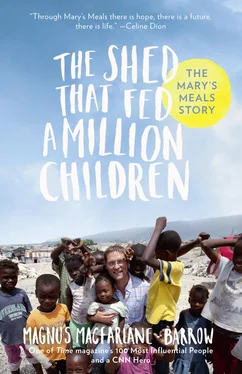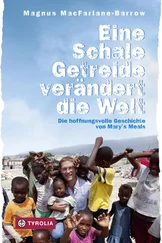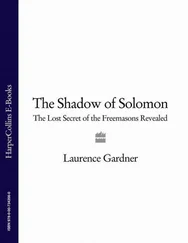‘Mum, if this is even possibly true we should go,’ we implored. Our parents explained that they could not travel during the forthcoming Christmas holidays because of work to be done on the guest house (our home was a rambling old shooting and fishing lodge). We persevered and were amazed when they suggested that we should go on our own. Ruth and her boyfriend Ken were nineteen years old, while my brother Fergus and I were sixteen and fifteen respectively. Between that breakfast discussion and the day of the flood we discovered that the village of Medjugorje was near the town of Mostar but, beyond that, we hadn’t managed to locate it on a map, let alone figure out how we would travel there from the airport in Dubrovnik or where we would stay when we got there. ‘All part of the adventure,’ we thought, as did several of our cousins and a couple of university friends of Ruth and Ken’s who had asked to join us. So it was then, that ten of us, some rather muddy from the waist down, eventually boarded a flight from Heathrow to Dubrovnik.
In the stunningly beautiful walled city of Dubrovnik, perched on the edge of the sparkling blue Adriatic Sea, we managed to find a night’s lodging with a man who had only one English phrase, presumably learnt from watching American films. ‘Take it easy, sonofabitch!’ he would exclaim with a smile in answer to every question we asked of him. As far as we could understand, his boarding house was illegal, a little private enterprise that had no right to exist in this communist country. The next morning we discovered that during this holiday period there was no public transport available and eventually we resorted to hiring a couple of cars to reach our destination. Before long we were winding our way along the pretty coast and then up into steep mountains towards Mostar, all the while still laughing about the ‘sonofabitch’ man from the night before. We had been well warned that the police and communist authorities were not at all enthusiastic about the reported apparitions taking place in Medjugorje or the idea of foreigners travelling there. In fact, before our departure from Scotland, our parents had received calls from the Yugoslavian Embassy suggesting it would be irresponsible of them to allow us to go there. And so we were not terribly surprised when, a few miles from Medjugorje, we were stopped by policemen who questioned us about our reasons for being here. They let us go after a few minutes but did not look impressed when Ken had the audacity to ask them directions to the village from their roadblock.
Finally, we arrived in the little scattering of stone houses amid vineyards and fields of tobacco, and parked outside a white church with two spires that looked far too big for the tiny village around it. The other thing of immediate note was an enormous cross on top of the hill overlooking the village. On that weekday evening, we entered the church and to our amazement found it packed full. The people were saying the rosary and we could see that Mass was about to begin. It seemed nearly everyone else there was local. Tall, weather-beaten men, with huge farmers’ hands, old ladies dressed in black and families with young children sang and prayed with all their hearts. It was a Mass unlike anything we had ever experienced before and we were profoundly moved by this incredible spectacle of faith. After Mass the priest approached us, introduced himself as Father Slavko and asked us where we were from. He was amazed to hear we had travelled from Scotland and asked us where we planned to stay. We told him we didn’t know yet and he explained that there were no hotels or guest houses in the village. He introduced us to his sister and her family, who immediately insisted that we come and stay at their house. There were three sons in the family of similar ages to us, as well as their cousin Gordana, who was visiting from Australia on holiday. She patiently began translating for us, and for the next few days she never stopped! Aside from some conversations about Italian football – a shared passion of ours and the sons of the family – we talked about the extraordinary events that had been happening in this village.
They explained to us that on 24 June 1981, two teenagers from the village, while walking along the road one evening, saw a lady on the hillside who they recognized as the ‘Gospa’, the Croatian term for the Virgin Mary. The following days they were joined by four other children, who also saw her and heard her speak to them. She told them she was the Virgin Mary, the Queen of Peace. One of the first things she said to them was, ‘I have come to tell the world that God exists. He is fullness of life, and to enjoy the fullness and obtain peace you must return to God.’ From then on these six children began seeing and talking to the Virgin Mary daily and, within a few days, thousands of local people were gathering on the hillside to be with the children as they dropped to their knees and conversed with someone that all others present could not see. But as the word spread, and people from greater distances began to arrive, the communist authorities became unhappy about these public displays of religious fervour and began to clamp down. The youngsters were taken to a psychiatric hospital where they were questioned and threatened with detainment, but none retracted any part of their claims – not even the youngest of them, nine-year-old Jakov Colo. The gatherings on the hillside were forbidden but the crowds started to fill the church each evening instead, where the children now began to have their apparitions. Meanwhile, the parish priest, Father Jozo Zovko, who had initially been sceptical about the claims of the children but came to believe them, was jailed for three years because of the stand he took on their behalf. Our hosts, through the ever-patient Gordana, explained to us how this incredible chain of events had unfolded in their village and they also told us of the numerous extraordinary miracles that they, along with many other local people, had witnessed. For example, often they had seen the sun spin in the sky (reminiscent of the famous miracle witnessed by tens of thousands at Fatima nearly seventy years earlier). There had also been various healings of people with all sorts of ailments.
We were spellbound by these stories that were told to us in a calm matter-of-fact way, by a clearly sane and well-balanced family. They told us there were many other stories of miracles, and some wild rumours too, but they were only telling us things that they knew for certain to be true. We were overwhelmed by the kindness of this family. It was only after the first night we realized with huge embarrassment that they had all given us their own beds to sleep in while they slept on the floor. On the following nights of our short stay, no matter how hard we tried, we could not persuade them to let us sleep on the floor instead. The family knew the visionaries well. Marko, one of the brothers, explained to us that he was actually going out with Mirjana, the oldest of the six. They insisted on organizing for us to be there with the visionaries, in the small side room of the church, when they would have their apparition. And, sure enough, for the next two evenings we found ourselves in a little crowded room just off to the side of the altar. Along with the bigger crowd in the body of the church we prayed the rosary together with the young visionaries, who again were of similar ages to ourselves. At a certain point all the visionaries suddenly stopped praying and simultaneously looked up towards the wall. Silence descended. We watched them smiling broadly and talking, but we could not hear their words. They appeared to be in deep conversation with someone we could not see. I was sitting so close to them I could have reached out and touched Marija, as she mouthed words to someone and seemed totally captivated and delighted. This lasted for a few minutes and then the children stopped looking up and became aware again of the rest of us around them. Together we resumed and finished the rosary.
Читать дальше












